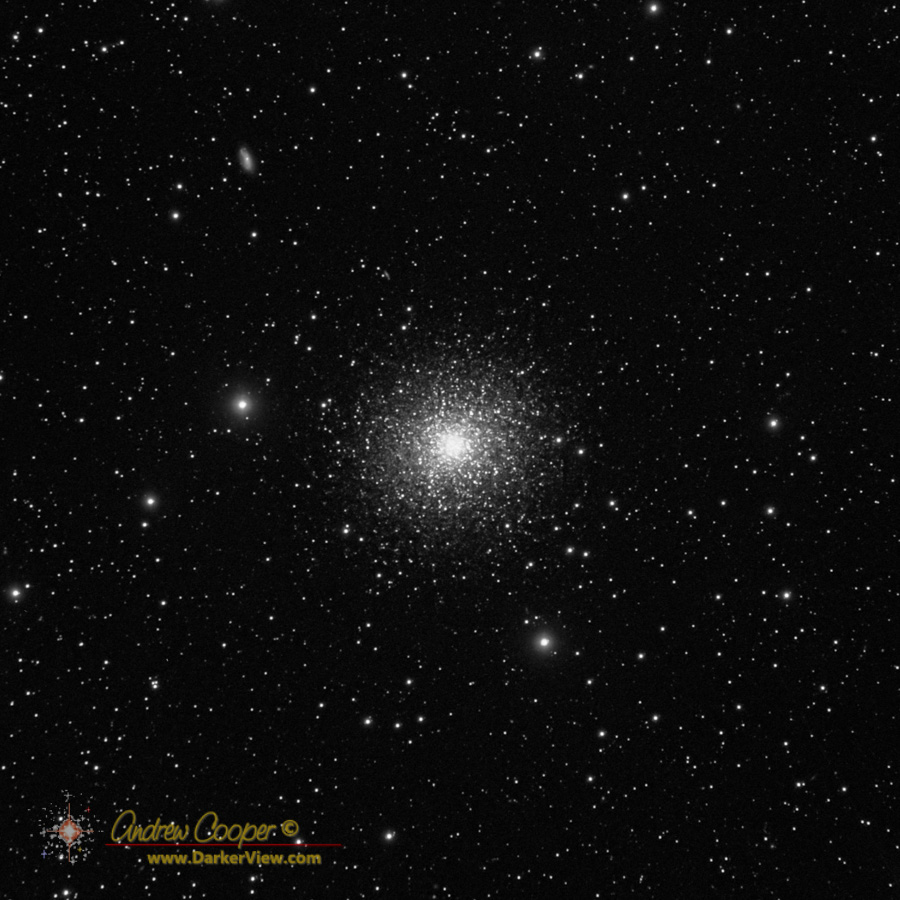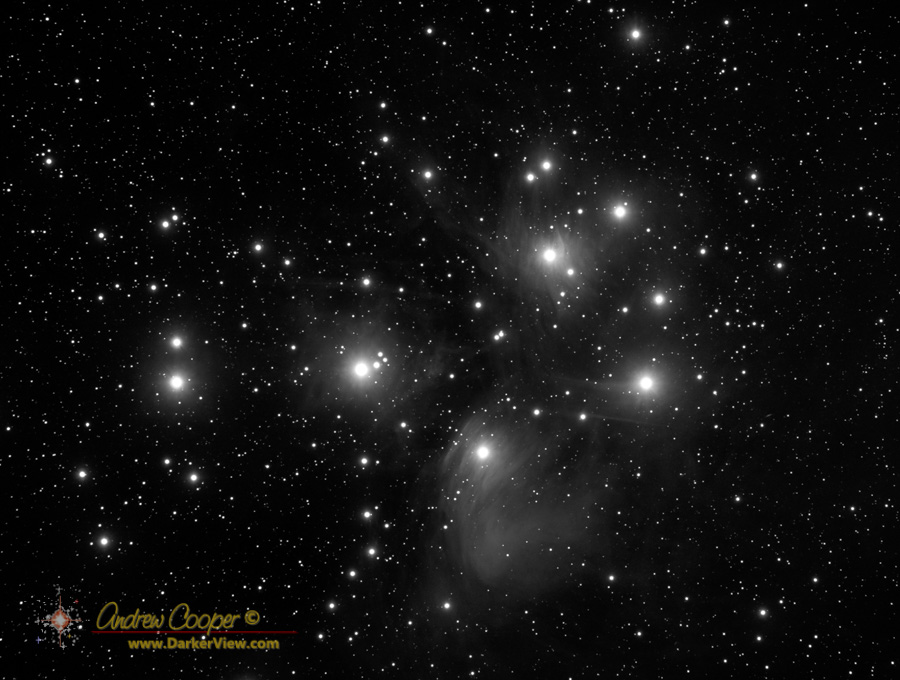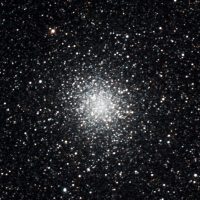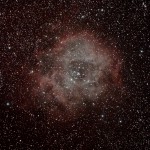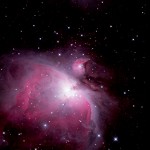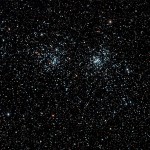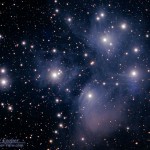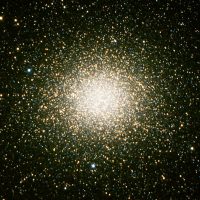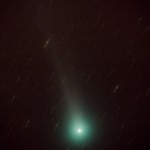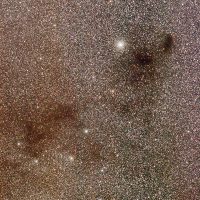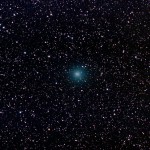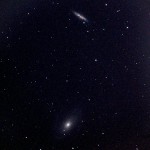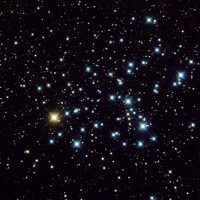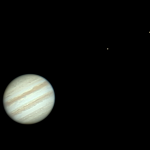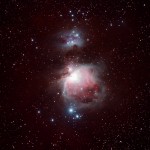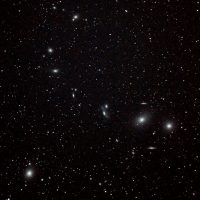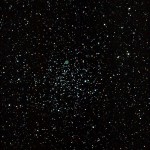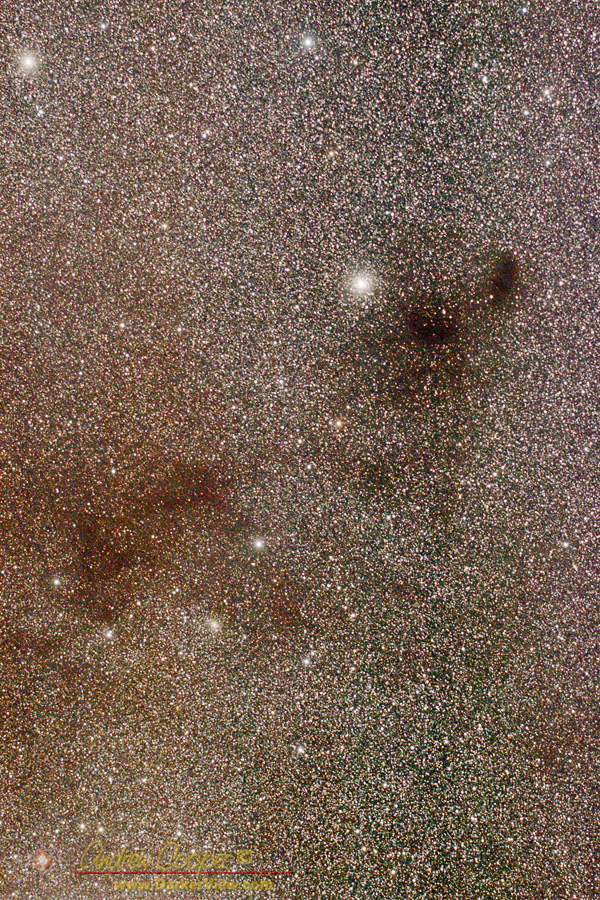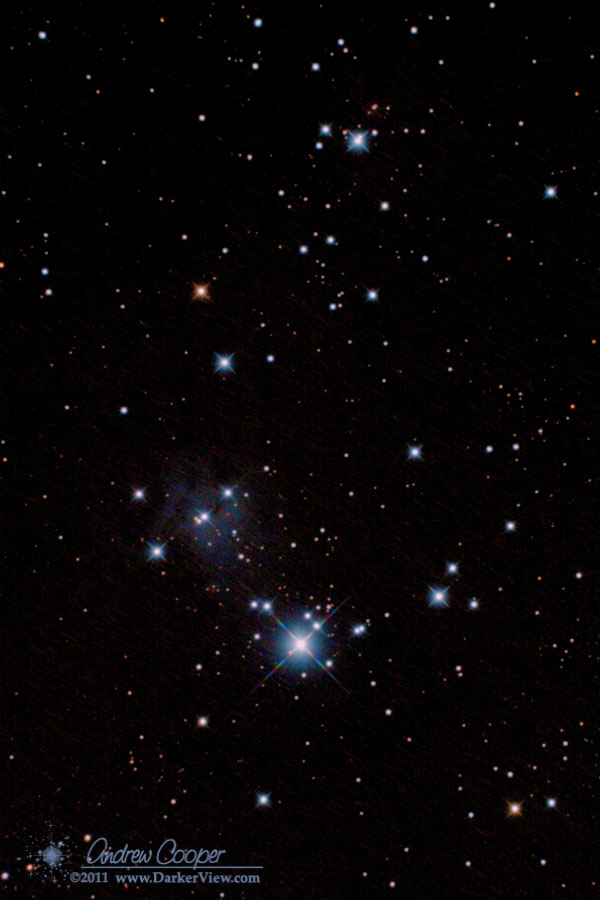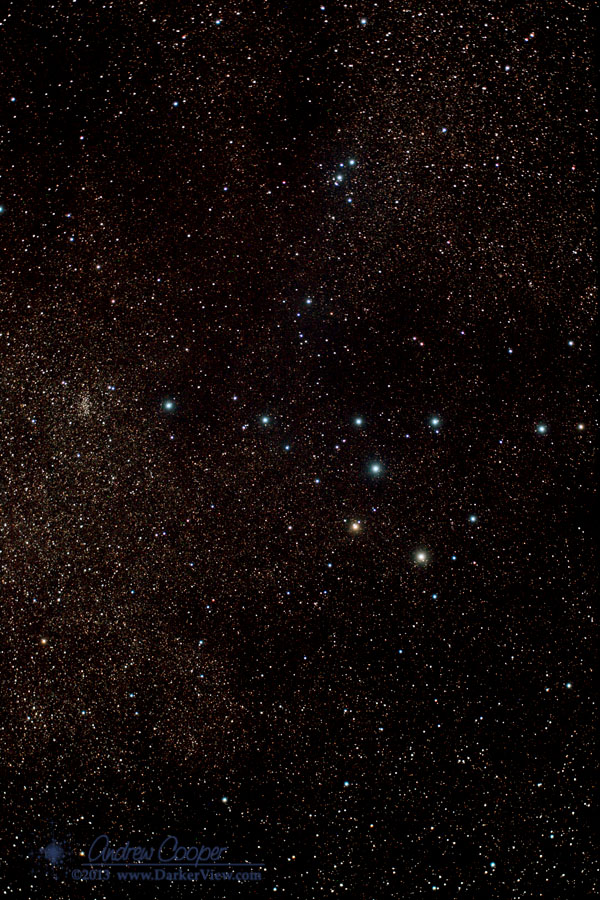The Hercules Cluster is one of the best known, and as you would expect, one of the most beautiful clusters to be seen in a small telescope. Also known as M13 this is a rich globular cluster with several hundred thousand stars it lies about 25,000 light years away in the constellation Hercules.
The cluster is always worth stopping by, whatever size telescope you are using. If I am using a larger ‘scope I might try to locate the small galaxy NGC6207 located about ½° to the northeast (upper left). If I am using an even larger ‘scope like my 18″ I can also try for the challenging IC4617 that lies halfway between NGC6207 and the cluster.
The image here is a luminance image only, taken through a filter that blocks IR and allows the remainder of the visible spectrum through to the detector. To get allow capture of the fainter stars while not overexposing the core a range of exposures from 10 seconds to five minutes were combined to create the image seen here…
